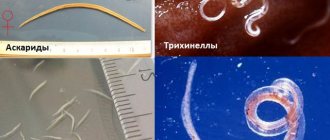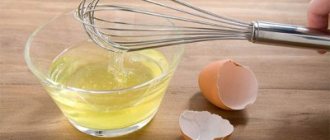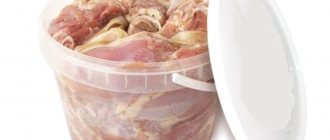If you want to get a detailed answer to the question, read below>>>
How and how long to store urine for analysis is not an idle question. It is often encountered by parents of babies under one year old and those who, for health reasons, are forced to undergo a certain type of test. How to store urine is more or less clear. In Soviet times, ordinary glass jars for mayonnaise and baby food were used.
Pharmacies now offer convenient disposable plastic containers with a tight-fitting lid. Glass bottles with a scale are still used - they are usually issued in hospitals. Let's figure out which container to give preference to and how long the sample can be stored.
In a refrigerator
Blood and urine for laboratory review cannot remain in a container or test tube for a long time. Human organic matter is a perishable product, so it is better to collect it right before delivering the container to the hospital. Since after some time biochemical reactions begin to occur in the container due to the breakdown of protein, salts, and oxidation. If you don’t think about how to store the collected urine before donating it, then after 120 minutes it will lose its original properties, so it can only be left for a long time in the refrigerator.
Material for general research should be kept in a refrigerator for no more than 24 hours.
To increase the shelf life, the temperature in the refrigerator compartment must be at least +4°C..
How long can biomaterial be stored for delivery, depending on the type of chemical test:
- General. It is necessary to collect in the morning, immediately after waking up, on an empty stomach. It is recommended to deliver to the laboratory within 60 minutes. The shelf life in this case is the shortest, so the effectiveness of this method is low;
- Chemical composition testing within 24 hours. Daily urine can be left in the cold, but the next day it must be taken to the clinic;
- For testing according to Nechiporenko, it is recommended to collect the first morning stream and give the container for study for an hour.
- Collection of organic matter for research according to Zimnitsky is carried out several times a day in sterile containers. They can be kept in the refrigerator for no more than a day from the moment the first sample is taken.
- To conduct a bacterial culture test, urine cannot be collected in advance and stored. This method involves transferring fresh organic matter to the laboratory, since many bacteria may die over time.
- For a pregnancy test, urine collected in the morning on an empty stomach is taken. Only the first portion contains the maximum concentration of the hCG hormone.
- To detect alcohol and drugs in urine, the method most often used is chemical toxicological testing (CTI), which does not imply long-term preservation of the liquid, since the period for detecting use is different for each person. It is not recommended to store it under any conditions.
Animal urine for analysis is allowed to be placed in the refrigerator for a short time, since collecting cat urine is very difficult and it is almost impossible to do this right outside the clinic doors. It is better to collect raw materials from a cat or dog for a clinical test at a veterinarian's appointment by puncturing the bladder immediately before testing. Most often this is done before surgery to determine the presence or absence of an inflammatory process in the body.
You can also leave stool in the refrigerator for some time for analysis. It is better to collect in the morning.
How was urine collected before?
With the advent of special cups for taking biological tests, the collection procedure has changed slightly. Previously, a half-liter jar was taken, the urine was collected, then lightly mixed and poured into another container with a smaller volume. This method is still relevant today, but only when it comes to detecting inflammatory processes in the bladder and urethra. Morning urine usually includes small amounts of epithelial cells, microorganisms and all sorts of substances that have accumulated in the urethra during the night and are washed out during urination in the first few seconds.
Then, when a general analysis is needed, you can skip the first few seconds of urination and only after that start collecting. For the reliability and accuracy of the results, it is also recommended to take a shower in the morning and not use personal hygiene creams after that - the body must be clean. Cream applied to the perineal area before urine collection may distort the alkalinity value.
How to collect and store urine from newborns
The urine of a child under 1 year of age has the property of rapid oxidation, so storing organic liquid of newborns is not recommended.
Basic methods of taking samples from infants:
- Using a regular package;
- Using a special urinal;
- Any sterile container.
It is not recommended to leave an infant’s organic matter in a jar for more than 120 minutes before transferring it to the laboratory. Organic samples from the newborn should be kept in a sterile container or tube with a tightly closed lid.
If you need to take urine from an infant
When such tests are prescribed for an infant, it can be very difficult to cope with the task. Nobody knows how long it will take. Specially created devices help with this - urine collections for infants. They are sold in pharmacies. Of course, nothing may work out with them the first time. So it's better to be patient.
A urine collector for infants is a plastic bag with Velcro that is put on the baby instead of a diaper. You cannot wear it under a diaper - the urine collector will slip off. It does not hold firmly: it needs to be glued to the baby’s skin with Velcro. The adhesive base of the Velcro is hypoallergenic and does not cause rashes or irritations.
But under the diaper it will move easily. In addition, you won’t be able to notice when the container is full. With the urine collector, the process was not at all easy.
Previously, urine from infants was taken for examination using a jar. This method is useful in some cases even today. A pot cannot be used, since the surface of this container always contains organic residues, which cannot be washed off; it is useless to try. They will affect the composition, and this will distort the result of the research.
It is not recommended to store infant urine, like adult urine. But if you really need to, it is important to take into account that the organic compounds in it disintegrate much faster than in the urine of an adult. You can put it in the refrigerator for a short time, but it is not recommended to store it for more than an hour. You need to warn your doctor about these manipulations. Depending on the purposes of the study and the results, the doctor will either make an adjustment taking into account the influence of cold, or ask to take the material again, excluding its cooling.
Impact on the accuracy of analysis results
Material collected from a child cannot be kept in the refrigerator for as long as that taken from an adult: after a short time, ammonia forms in the child’s urine. The presence of this substance may indicate a non-existent pathology.
The doctor who has issued a referral for a test in the laboratory must explain to the patient how long samples can be stored and under what conditions.
The following factors may affect the accuracy of the results:
- entry into the container of environmental elements, bacteria, and other foreign substances;
- if the child is not washed before collection, microorganisms accumulated on the external genitalia can spoil the results;
- incorrect content: more than 120 minutes at room temperature and more than 24 hours in the refrigerator.
Each method of laboratory research has its own algorithm for collecting urine: for example, for a general analysis it is recommended to collect the middle stream, and for identifying the hCG level - the first.
Where to find a container for biological material
When a person returns home from the hospital, having received a referral for a urine test, he has more questions in his head than answers, and the doctor is far from being able to answer. Analysis is not done every day and this situation is not typical and requires a creative approach. The process poses difficulties, the main one being the container for collecting biological material.
Gone are the days when you had to look for a suitable vessel. This is the 21st century and in any pharmacy today you can buy specially designed containers for donating biological material. For urine, special plastic cups have been invented that can be easily closed and allow you to deliver the contents to the hospital without worrying about anything. They are inexpensive and anyone can buy them. Of course, the material will be accepted in any container - quite recently they only handed it in in mayonnaise jars. But those days are gone. Special containers ensure that analyzes show only the correct results and transporting materials is now much easier. You no longer have to worry about the cleanliness of the container, possible residual household chemicals, etc.
With the new invention, taking a urine test is as easy as taking a blood test, for which you need to buy test tubes and go to the appropriate office. So, it’s better to forget about the methods of yesteryear and buy these disposable containers. They do not look like kitchen utensils and do not evoke any associations.
There is another difficulty. In the morning, public transport is full of people, and for tests, as luck would have it, you need morning urine. Getting from home to the hospital is not always easy. Is it possible to wait until rush hour ends and leave a little later? Is it possible to stay longer?
We determine the unsuitability of the material for analysis
If urine remains in a collection container for more than 24 hours, it becomes unsuitable for chemical study. It should also be taken into account that the laboratory does not begin testing immediately after delivery.
Signs of spoiled raw materials:
- sediment at the bottom of the container;
- cloudiness of the liquid.
The results often turn out to be false due to the fact that the organic substance loses its properties if improperly stored or transported for a long time. In a warm room, bacteria form in urine, salts are deposited, and sediment forms.
Scraping for enterobiasis:
On the eve of the study, you must obtain a special tube with a cotton swab to collect biomaterial from the Medical Center. For this study, a scraping is taken from the perianal folds (around the anus) by the patient himself.
In the morning (without getting out of bed), before performing hygiene procedures and going to the toilet, move a special test tube with a cotton swab in a circular motion around the anus, close the test tube tightly. Deliver to the Medical Center on the day of the test.
Rules and recommendations
In order to obtain an informative diagnosis, you need to know how long organic liquid can be stored before transfer to the clinic:
- to obtain true results, it is recommended to collect organic material immediately before submitting it to a laboratory, for example, to Invitro;
- it is important to understand how long urine collected from infants and adults can be stored;
- For some types of tests, biological fluid can be kept in the refrigerator, in a tightly closed container, for no longer than 24 hours.
Rules to follow before taking urine:
- completely eliminate alcohol from consumption within 24 hours;
- postpone taking medications that affect the composition of the fluid;
- do not eat carrots, beets and apples the day before;
- Before collecting, it is important to wash thoroughly, without using chemicals.
- The container must be absolutely sterile.
- For some types of research, preservatives can be added to the donated liquid to extend the shelf life:
- thymol;
- boric acid;
- acetic acid;
- toluene.
In this case, the main thing is not to overdo it with the preservative, otherwise the information content of the results will suffer.
Due to the natural oxidation process, the color of the raw materials in the jar may darken over time. Such a change is not an indication of unsuitability.
General rules when preparing for laboratory research:
It is advisable to follow these rules when conducting hormonal, biochemical, hematological tests, immunological tests, the results of which depend on the physiological state of the person.
- For most studies, it is recommended to donate blood in the morning on an empty stomach (at least 8 hours and no more than 14 hours of fasting), between 8 and 11 hours, and avoid food overload the day before. For tests for infections and some other tests, and if necessary, it is permissible to donate blood for research during the day after a 2-4 hour fast.
- If you are taking any medications, you should consult with your doctor about conducting a study while taking medications or the possibility of stopping the drug before the study.
- Avoid drinking alcohol on the eve of the test.
- It is necessary to exclude physical and emotional stress, smoking 1 hour before the test.
- Before taking a blood test, it is better to sit for 10-15 minutes.
- It is not recommended to donate blood for laboratory testing after physiotherapeutic procedures, instrumental examination and other medical procedures (for example, cytoscopy, colonoscopy, laser therapy, or prostate biopsy before a PSA test); laboratory testing should be postponed for 5-7 days.
Also, tests can be performed not on an empty stomach and at any time of the day as directed by the doctor.
How to properly prepare for a urine test
Preparation for urine collection is carried out taking into account the following recommendations:
- You should not drink alcohol the night before.
- Avoid eating foods that can change the color of your urine. These are beets, blackberries, carrots, legumes.
- If you take a vitamin complex or medications, consult your doctor to see if they will affect the test result. It is known that the smell and composition of urine are affected by Rifampicin and Penicillin.
- It is unacceptable to consume diuretics the day before collecting secretions.
When you get up in the morning, before you go to the toilet, prepare yourself properly:
- Wash thoroughly with running water, without using soap.
- Flush the first portion of urine into the toilet, then place the container and urinate.
- It is not advisable for women to donate urine during their menstrual periods. But if the matter is urgent, try to cover the vagina with a cotton swab and, holding it, collect the urine.
- When 150 ml is collected in the container, that is enough. Close the glass with a lid, being careful not to touch the inside of the container.
If urine needs to be collected from an infant, a sterile urine bag is purchased at the pharmacy, from which the urine is then poured into a container. If the baby goes to the potty, wash the potty with baking soda and then rinse off the composition under running water.
Explain to your child how important it is for him to go potty in the morning. Before doing this, wash his genitals with warm water in the shower and pat dry with a dry paper towel.
Preparing for breast milk analysis:
- It is advisable to collect breast milk before feeding the baby or two hours after breastfeeding.
- Before collecting the material, thoroughly wash your hands and breasts with warm water and soap, thoroughly treat the nipples and the surrounding area of the mammary glands with a cotton swab moistened with 70% ethyl alcohol (each gland is treated with a separate swab).
- Express the first 10-15 ml of milk into a separate container; this portion is not used for analysis.
- The next 4-5 ml of milk are collected from each breast into a separate sterile container (sign - right and left mammary gland), while trying not to touch the edges of the container with your body.
- Deliver the material to Medical within 2 hours after collection.
Daily diuresis
Daily urine is collected in one three-liter container, prepared independently (sterilized and dried). An alternative could be a large medicine container with a capacity of 2.7 liters. The first morning portion of urine is not subject to collection.
Can stool samples be stored in the refrigerator?
The countdown begins with the second emptying of the bladder. The results of all urinations are drained into a container.
Collected urine should be stored exclusively in the refrigerator, without freezing. A mandatory condition for safety is a sealed lid on the container with biomaterial.
After 24 hours, the biofluid must be mixed, the resulting volume measured and recorded. From the total amount, separate a portion of urine, placed in a standard (small) sterile container, and immediately deliver it to the study site.











